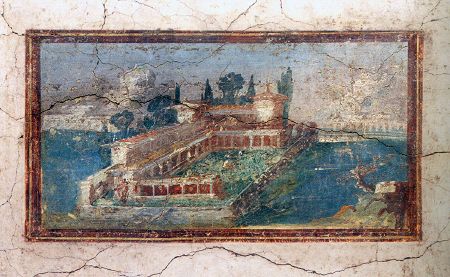In the ancient civilizations of the greater Mediterranean region, large-scale paintings decorated the walls of palaces, houses, tombs and public buildings, often in celebration of their patrons' lives, achievements, and cultivated tastes. Also prized were painted wood panels. Some were kept in special cabinets and shown only to special guests. Others, like Fayoum portraits, commemorated the deceased in life and accompanied them to the eternal world of the grave. After a very brief introduction to the traditions of monumental painting developed by the ancient cultures of the Mediterranean world, this course will focus on the wall and panel paintings of the Roman era. Paintings from Rome, Pompeii, Herculaneum, and Ostia provide the core of visual material, but paintings from the Roman provinces will be discussed as well. This course will pay special attention to the meaning of various subjects in light of patrons' social concerns and contexts. These include (but are not limited to) images of gods and goddesses, heroes and heroines, mortal men and women, children and slaves; daily, religious, and political life, landscapes, gardens and still lifes. Lectures and class discussion will take account of a number of overarching problems in the study of Roman painting such as the relationship of Roman imagery to Greek models, the validity of the four Pompeian styles as a 'scientific' tool, and the reception of Roman paintings in modern times. In special sessions at the Kelsey Museum's new Upjohn wing, students will learn about the technical processes of Roman wall painting as well as the problems and methods of reconstruction and interpretation by studying actual fragments of Roman paintings as well as a large scale modern replica of a major Roman wall painting in the Villa of the Mysteries in Pompeii. Readings for twice weekly class discussions and lectures will be drawn from R. Ling, Roman Painting (1991) and an electronic course pack. An in-class report and short (3-4 page) paper to be prepared during the first half of the term will be followed by a ten-page research paper in the second half. Midterm and final examinations will be based on slide attributions and essays.

